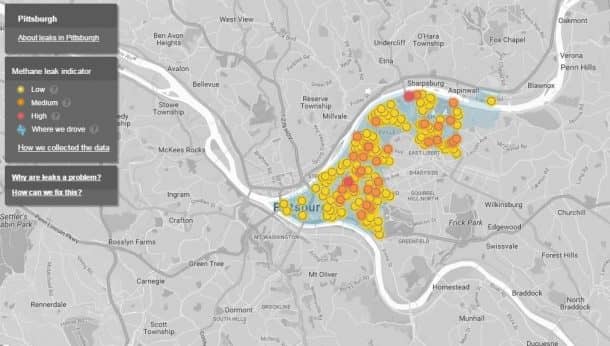Methane is a colorless and odorless gas that we use as a source of fuel in our daily lives. It is usually mixed with other odorants as a safety measure, but out in the open, it is still quite undetectable. The Google Street View Cars are now equipped with a methane detector that can detect gas leaks even from the pipelines underneath the streets. The study was published in the journal Americal Chemical Society.
Researchers at the Colorado State University partnered with Google’s Street View along with the Environmental Defense Fund and developed a method to detect methane leaks from 20 meters away and even from below the streets. Most of America’s streets have underground pipelines that are over a hundred years old. These pipes are exposed to moisture at all times which causes considerable damage. The cost of repair even for a small portion is around $1.2 – $2 million, so the authorities allow small leaks to go on as long as they are not harmful. Only the ones posing immediate dangers are considered fixed at priority.
The usual Google Street View cars are mounted with a visible camera, but the methane detector on the car is not on the outside. An air collector fitted in the bumper of the car along with an infrared sensor forms the methane sniffer. The air sucked from the opening on the bumper is fed to a small tube, it then passes through samples on infrared light. The laser light that escapes the tube is then measured to detect any traces of methane.
The lead author of the research paper Joseph von Fischer says that the purpose of the project is to “minimize greenhouse emission and optimize investment in pipeline management.” The cities that leak the most methane in the US include Boston, MA, Staten Island, NY, and Syracuse, NY due to their old corroded pipelines. The leaked gasses are 25 times as toxic as the ones released by the cities with newer pipelines.
The map of Pittsburg below shows the levels of methane leak throughout the city.

In the outcome of the data obtained through the project, a New Jersy utility company is investing $1 billion to upgrade the pipelines. Currently, only four cars are equipped with methane sensors, but they are planned to spread throughout the US. The researcher says:
“Although this mobile monitoring method produces conservative estimates of leak rates and leak counts, it can still help prioritize both leak repairs and replacement of leak-prone sections of distribution lines, thus minimizing methane emissions over short and long terms.”
Watch the video to learn more about the project:


